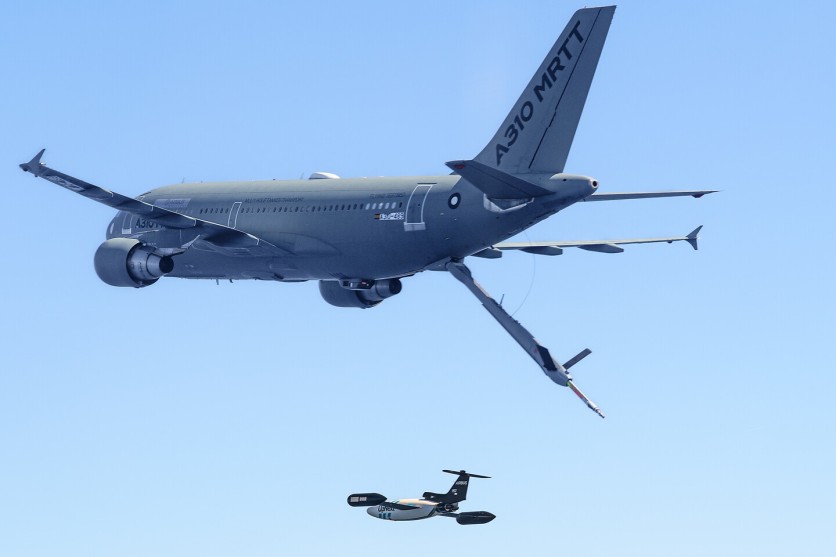Airbus Defence and Space and Airbus UpNext, the company's wholly-owned subsidiary, have successfully directed and controlled a drone autonomously while in flight using an A310 MRTT.
The technologies show a substantial advancement for future aerial operations involving manned and unmanned assets as a first step towards autonomous formation flight and autonomous air-to-air refueling (A4R).

''Made in Europe" Solutions
According to Airbus, these "Made in Europe" solutions could improve operations while lowering crew-training expenses and reducing crew fatigue and the possibility of committing human mistakes.
"The success of this first flight-test campaign paves the way for developing autonomous and unmanned air-to-air refueling technologies," Jean Brice Dumont, Head of Military Air Systems at Airbus Defence and Space, said in a press release statement.
"Even though we are at an early stage, we have achieved this within just one year and are on the right track for manned-unmanned teaming and future air force operations where fighters and mission aircraft will fly jointly with drone swarms."
The technologies, known as Auto'Mate, were installed on an A310 MRTT flying testbed that took off from Getafe, Spain, on March 21. They were also installed on several DT-25 target drones that were functioning as receiver aircraft and flying out of Arenosillo Test Centre (CEDEA) in Huelva, Spain.
The drone's control switched from a ground station to the A310 MRTT over the waters of the Gulf of Cadiz, autonomously guiding the DT-25 to the in-flight refueling point.
The four successively deployed receivers were sequentially controlled and ordered throughout a flight test that lasted over six hours thanks to cooperative control algorithms and artificial intelligence, according to Airbus.
The three cornerstones of the Auto'Mate Demonstration technology start with the accurate relative navigation, which is designed to precisely determine the relative location, speed, and attitudes between the tanker and the receiver.
Second is intra-flight communication, which is present across platforms and enables information sharing among the various assets to boost the system of systems' autonomy.
Lastly, cooperative control algorithms were created to offer the tanker and the receiver/s functions for guidance, cooperation, consensus, and collision avoidance.
Read Also : Future Combat Air System: Europe's Demo on Manned-Unmanned Defense with Airbus a Success
Second Campaign
These cutting-edge innovations, created by a European team of engineers from Spain, Germany, and France, will widen the capability gap between themselves and their rivals while also being reused in significant technology initiatives like the Future Combat Air System (FCAS).
A second campaign, which will examine the use of artificial intelligence-based navigation sensors and improved algorithms for autonomous formation flight, is anticipated to begin before the end of 2023.
Two simulated drones will also be flying close to the A310 MRTT in order to show off multi-receiver autonomous operations and collision-avoidance algorithms, as per Airbus.
Related Article : SpaceX vs. Airbus: Jean-Marc Nasr Flexes on SpaceX CEO About Mars in 2026, Elon Musk Accepts Challenge

ⓒ 2025 TECHTIMES.com All rights reserved. Do not reproduce without permission.




